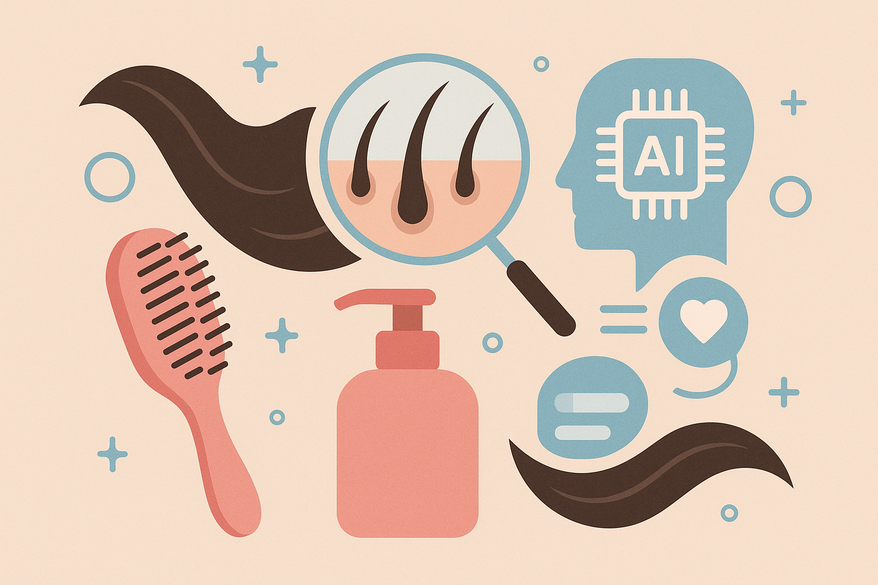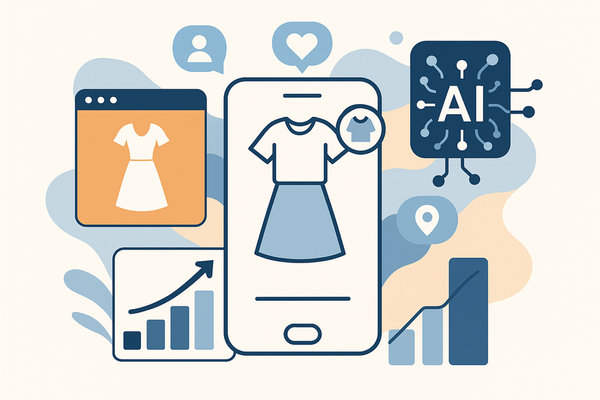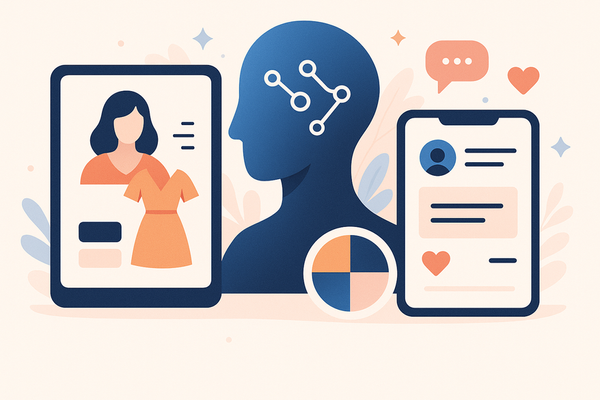Revolutionizing Hair Care with AI Hair Health Analysis: Precision, Personalization & Early Detection
Discover AI hair health analysis: revolutionizing hair care with precision, personalization, and early detection for healthier hair and improved diagnostics.

Estimated reading time: 7 minutes
Key Takeaways
- Objective diagnostics: AI quantifies hair density, thickness, and scalp health with consistent precision.
- Personalized care: Tailored recommendations adapt to each individual’s hair profile and treatment history.
- Early detection: Machine learning models spot subtle changes before visible symptoms appear, enabling proactive intervention.
- Efficiency & cost savings: Automated analysis reduces clinic visits and speeds up assessments.
- Future potential: Integration with telehealth, mobile apps, and wearable sensors is on the horizon.
Table of Contents
- Background on Hair Health
- What is AI Hair Health Analysis?
- Benefits of AI-Based Diagnostics
- How the Process Works
- Applications and Future Developments
- Considerations and Limitations
- Conclusion
- Call-to-Action
Background on Hair Health: traditional hair analysis
Healthy hair starts with a healthy scalp. Yet common issues disrupt that balance:
- Hair loss or thinning
- Dandruff and scalp flaking
- Scalp inflammation and itching
- Pattern baldness (androgenetic alopecia)
Traditional analysis relies on visual examinations by stylists or dermatologists, manual measurements of hair density and diameter, scalp biopsies, and microscopic evaluations. These methods often suffer from subjectivity, time constraints, and limited repeatability. AI hair health analysis standardizes evaluations, uncovers deeper insights, and ensures every individual receives precise diagnosis and care.
What is AI Hair Health Analysis? image recognition · machine learning · computer vision
AI hair health analysis automates the evaluation of hair and scalp conditions using image recognition and AI-powered analytics. Core steps include:
- Image acquisition via smartphone cameras or clinical imaging devices
- Preprocessing (noise reduction, color standardization, segmentation)
- Computer vision to extract features and classify follicles
- Machine learning models trained on thousands of annotated images
These models detect patterns invisible to the naked eye—identifying miniaturized hairs and quantifying shaft thickness. Combined with deep learning, AI delivers precision impossible through manual inspection.
Benefits of AI-Based Diagnostics for Hair Health personalized care · preventive care
Integrating AI-based diagnostics yields multiple advantages:
- Improved accuracy: Consistent metrics reduce human error.
- Personalized diagnostics: Care plans tailored to each hair profile.
- Early detection: Spot minor changes before visible symptoms appear.
- Speed and consistency: Near-instant analyses ensure uniform results.
- Cost-effectiveness: Fewer clinic visits and faster assessments lower expenses.
How the Process Works data collection · imaging techniques · analysis algorithms · HairMetrix
The structured workflow consists of:
- Data Collection & Imaging
- Capture high-resolution images via smartphone apps or dermatoscopes
- Ensure consistent lighting and angle for tracking
- Preprocessing
- Noise reduction filters
- Color calibration
- Region-of-interest segmentation
- AI Analysis
- Identify individual follicles and classify health status
- Measure density (hairs/cm²), shaft diameter, miniaturization ratio
- Compare results against large datasets to flag abnormalities
- Output & Recommendations
- Interactive dashboards with quantitative metrics and heatmaps
- Personalized product or treatment suggestions
- Automated progress tracking with alerts
Real-World Examples:
- HairMetrix: Non-invasive, real-time AI insights in salons and clinics.
- WSU Research: AI models that automate hair morphology analysis—cutting analysis time by over 70%.
Applications and Future Developments telehealth consultations · mobile apps · self-care
Current Applications
- Clinical dermatology and hair transplant centers refine plans and monitor graft success.
- High-end salons use AI consultations to upsell personalized scalp treatments.
- Consumer apps offer at-home scalp scans and tailored reminders—see our guide to best hair care apps.
Future Advancements
- Integrated health diagnostics combining hair analysis with nutritional and hormonal biomarkers.
- Enhanced telehealth with real-time AI assessments during virtual visits.
- Intuitive mobile apps featuring AI chatbots and direct product ordering—learn more about personalized hair care AI.
- Continuous at-home monitoring via wearable sensors or shower-mounted cameras.
Considerations and Limitations data security · regulatory status · model limitations
Privacy & Data Security
- GDPR and HIPAA compliance for storing sensitive images and data.
- End-to-end encryption and secure cloud storage protect user information.
Model Limitations & Biases
- Diverse training data is critical—underrepresented skin tones or textures may yield less accurate results.
- Complex conditions like scarring alopecia still require expert evaluation.
Regulatory & Clinical Validation
- FDA and CE approvals are in progress for many AI hair health tools.
- Peer-reviewed studies and clinical trials are necessary to validate efficacy and safety.
Conclusion hair care diagnostics · personalized hair care
AI hair health analysis is revolutionizing hair and scalp care with:
- Objective, consistent measurements of density, thickness, and scalp condition
- Personalized recommendations that evolve with your hair
- Preventive alerts for early-stage issues
By combining computer vision and machine learning, AI complements traditional examinations—saving time, cutting costs, and enhancing experiences from self-care routines to professional practices.
Call-to-Action professional service · further reading
- Explore platforms like HairMetrix for salon- and clinic-based AI analysis.
- Download consumer apps offering at-home AI hair health monitoring.
- Consult dermatologists embracing AI-powered assessments for advanced care.
- Dive deeper into AI hair analysis technology with the AI Hair Analysis Technology 2024 article.
- Read the ScienceDaily report on the latest research.
FAQ
How does AI detect hair thinning early?
AI models analyze high-resolution images to identify miniaturized hairs and quantify changes in shaft diameter that are imperceptible to the naked eye.
Are AI-based hair diagnostics accurate?
When trained on diverse, annotated datasets, AI tools can achieve high consistency and precision—but should complement, not replace, expert clinical judgment.
What about privacy and data security?
Leading platforms implement GDPR and HIPAA compliance, end-to-end encryption, and secure cloud storage to protect sensitive scalp images and health data.
Can I perform AI hair analysis at home?
Yes—consumer mobile apps and smartphone-based imaging devices allow at-home monitoring, providing monthly scans and personalized care reminders.
What are the future developments in AI hair health?
We expect integrated health diagnostics, enhanced telehealth consultations, AI chatbots for instant advice, and continuous monitoring via wearable sensors.





